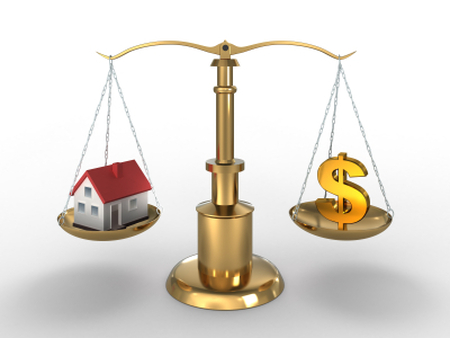How Price Per Square Foot influences your decisions when building or buying a new home
What is a price per square foot for new homes these days? In one form or another, this question is one of the most asked from our visitors. Unfortunately, it is also one of few questions that we just cannot answer very accurately.
One of the first steps in building a home is determining your budget. Contractors often try to avoid firm and exact prices, preferring to “leave the door open.”
After sorting through the issues of location, price, floor plan and features, do you go with Builder A or Builder B?
For many new home buyers, the choice comes down to which one offers a lowest cost-per-square-foot price.
Unfortunately, It has been said that estimating a home on a per square foot basis is like estimating the cost of building a house by counting the number of electrical outlets on the walls.
There are several problems with this approach. First, no two builders work alike or use identical materials, so the calculation will not be apples to apple comparison.
Buyers who know something about material costs may factor this in. For example; if Builder A’s standard kitchen cabinets are white with vinyl wrapped raised panel doors, and Builder B has oak cabinets with flat panel doors, Builder B’s costs are higher.
Builder B’s costs may also be higher in less obvious ways. For example, he may use a 94 percent efficient gas furnace instead of a 78 percent efficient one. Or he may use plastic pipes instead of copper ones, or he may use stronger concrete for your slabs, so the cracks are hairline instead of ¼ inch wide.
Even when builders in the same market are consistent in their method for measurement, their notion of square feet and buyers’ perceptions are likely to differ.
Most consumers think this means “usable space.” But most builders calculate it regarding the total area occupied by the building, and this can make a substantial difference. For example, using the builder’s approach, 150 to 200 square feet of a two-story house billed as “1,800 square feet,” can be a solid wall.
The second problem with the cost-per-square-foot calculation is that the two builders may not be calculating square feet in the same way when calculating your total home building price.
The conventions for calculating these figures still vary from one region of the country to another and within the same market from one builder to another.
Some builders only include what you can walk on, excluding regular-sized closets but counting walk-ins. Others count two story spaces twice because the entire volume is finished space that must be heated and cooled.
To further complicate matters for consumers, realtors and appraisers often use methods for calculating square footage that differs from builders.
The primary distinctions are “finished” or “unfinished” and “above grade” or “below grade”.
A “finished” area is defined as “an enclosed area that is suitable for year round use”. The finished area calculation also includes all walls, both interior, and exterior. “Unfinished” areas most commonly include garages and unfinished basements.
Most of building plans have square foot calculation printed right on them – which means – exactly nothing.
On most building plans, square footage is electronically generated by the computer program the plans are made in. Some programs take into consideration outside wall dimensions, some inside wall dimensions.
Some include the garage while some don’t. Some differ between above and below grade: “Above grade” includes all floor levels that are entirely above the ground. “Below grade” includes all floor levels that are partially or entirely below the ground. When a house is built into a hillside, the entire structure will receive the “below grade” designation.
Also, sometimes the usable area is measured at the floor level so that two-story spaces such as entry foyers and family rooms can only be included in the calculation once.
Some of the standards will strike the layman as nit-picky–for example a fireplace and chimney can only be included when the hearth is at floor level–but seemingly minor differences of 25 to 50 square feet (at $150 per square foot), here and there can add up to a substantial amount.
Therefore, pricing a home per sq/ft basis is never a guarantee that you will end up in the home you expect. Quite the opposite – it is often a way for some builders to calculate only the cheapest materials allowed by the Building Code to get the job.
A much better solution for the homebuyer would be to be very clear about the usage and advantages and disadvantages of different materials used to build their home. An experienced builder will be of enormous help in assisting you to make the right choices when choosing the materials for your new home.
Do you want the lowest price?
Even if you can get a reasonably comparable cost per square foot info from multiple builders—meaning they’re all bidding using the same set of plans, specifications, home site cost factors, product amenities, finishes, etc.—are you going to take the lowest price per square foot automatically? How do you suppose the builder with the lowest price per square foot was able to do it? Plus, you want your builder to make a profit on building your home. If she doesn’t, she won’t be in business to take care of any warranty issues with your home.
So…if you choose to, use preliminary cost per square foot numbers to determine if you’re “in the ballpark” budget-wise. Don’t assume they’ll be the basis of your purchase agreement. Exercise great caution when using cost per square foot in comparing builders and their homes. Even if you believe you’ve got an “apples to apples” comparison, the low cost per square foot builder might just be one of those bad apples!
























